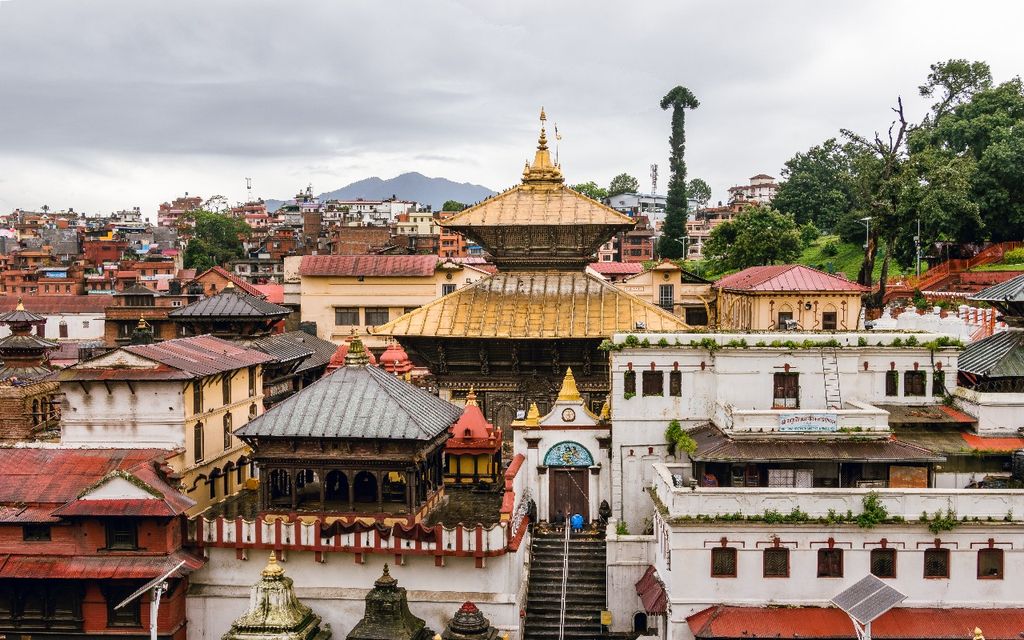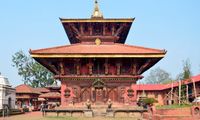Pashupatinath Temple

About
Pashupatinath Temple, located in Kathmandu, Nepal, is one of the most sacred Hindu temples dedicated to Lord Shiva. Recognized as a UNESCO World Heritage Site, this ancient temple is not only a religious landmark but also a center of history, culture, and spirituality. Situated on the eastern banks of the holy Bagmati River, the temple complex spans over 246 hectares and includes more than 500 smaller shrines and monuments.
The temple’s unique Newari-style architecture, featuring golden and copper roofs and a four-faced lingam of Lord Shiva, adds to its sacred allure. Pashupatinath Temple is a must-visit destination for those seeking spiritual peace and insight into Nepal’s deep-rooted Hindu traditions. Visitors can witness daily rituals, cremation ceremonies by the river, and vibrant festivals like Maha Shivaratri, attracting thousands of devotees and spiritual seekers from across the world.
The rituals are conducted by traditional priests from Karnataka, India, preserving centuries-old customs. Whether you are a pilgrim, a cultural enthusiast, or a curious traveler, Pashupatinath Temple offers an unforgettable journey into Nepal’s religious and spiritual essence.
Locate Us
Nearby Attractions
Locate Us
Pashupatinath Temple location is about 5 kilometers east of Kathmandu city center, near Tribhuvan International Airport, making it easily accessible by car, taxi, or public transport. The location on the banks of the Bagmati River creates a calm and spiritual ambiance, especially during early morning and evening prayers. You can also walk to nearby ghats and shrines for a complete spiritual experience.
Religious Significance of Pashupatinath Temple
Pashupatinath Temple holds deep religious significance for millions of Hindu devotees in Nepal and around the world. It is dedicated to Lord Shiva, worshipped here in his powerful form as Pashupati, the "Lord of All Living Beings." According to ancient Hindu scriptures, this sacred temple is one of the holiest shrines where Lord Shiva resides in spirit.
As one of the four most important pilgrimage sites for Shiva worshippers (along with Kedarnath in India, Somnath in Gujarat, and Kashi Vishwanath in Varanasi), Pashupatinath Temple attracts thousands of pilgrims every year. It is believed that praying here washes away sins and brings peace, prosperity, and spiritual liberation (moksha).
The temple is also connected to many legends and myths. One popular story tells that Lord Shiva once roamed the forests of the Kathmandu Valley in the form of a deer. When gods tried to bring him back to his divine duties, he refused. Eventually, they caught him, and in the struggle, his horn broke into four pieces. These pieces are said to have formed four holy sites in Nepal, including Pashupatinath.
Every ritual performed at the temple, from the daily pujas to the grand celebration of Maha Shivaratri, holds symbolic meaning. The sacred Bagmati River flowing beside the temple is considered a purifier of sins, and cremations held on its banks help the souls of the departed attain salvation.
For devotees, visiting Pashupatinath Temple is not just a religious act—it is a journey of faith, surrender, and connection with the divine. It is a place where prayers are believed to be answered, wishes granted, and hearts transformed.
Why Visit Pashupatinath Temple?
- Spiritual Significance: Pashupatinath is a divine site dedicated to Lord Shiva, where prayers are believed to fulfill wishes.
- Cultural Heritage: One of the oldest temples in Nepal, deeply rooted in Hindu mythology and mentioned in ancient texts.
- Architectural Beauty: Features classic Newari craftsmanship, intricate carvings, and golden pagoda-style roofs.
- Sacred Rituals: Observe authentic Hindu cremation rituals along the Bagmati River and various daily spiritual ceremonies.
- Vibrant Festivals: Experience Maha Shivaratri, when thousands gather from Nepal and India to worship and celebrate.
Festivals Celebrated:
- Maha Shivaratri: The biggest annual festival where thousands worship Lord Shiva all night.
- Teej: Celebrated mainly by women, praying for marital bliss and the well-being of their spouses.
- Ekadashi & Poornima: Auspicious monthly dates attracting worshippers for fasting and prayers.
How to Reach Pashupatinath Temple?
- By Road: Easily accessible from any part of Kathmandu via private car, taxi, or public buses.
- From Airport: Located just 2-3 km from Tribhuvan International Airport, ideal for travelers.
- Guided Tours: Available through agencies like Trekking Advisor, which provide history and cultural insight during the visit.
Travel Tips for Visit in:
- Dress Modestly: Respect religious customs by wearing appropriate clothing.
- No Photography Inside Main Temple: While you can take photos around the premises, avoid photographing inside the sanctum.
- Footwear Rules: Remove shoes before entering sacred spaces.
- Be Mindful of Cremation Areas: Avoid close-up photos or intrusive behavior during funeral ceremonies.
- Morning Visits Recommended: Arrive early for peaceful darshan and beautiful morning rituals.
Conclusion:
Pashupatinath Temple is more than just a place of worship—it is a powerful spiritual and cultural symbol of Nepal. With its deeply rooted connection to Hindu beliefs, majestic architecture, and sacred riverside setting, it stands as a timeless tribute to the country’s religious heritage. A visit to this temple is a must for anyone exploring Kathmandu or diving into the heart of Nepal’s spiritual culture.
Let, Trekking Advisor be your reliable companion for discovering Nepal’s most sacred destinations like Pashupatinath Temple. We provide detailed travel guides, local insights, and the best cultural experiences to help you uncover the true soul of Nepal.










